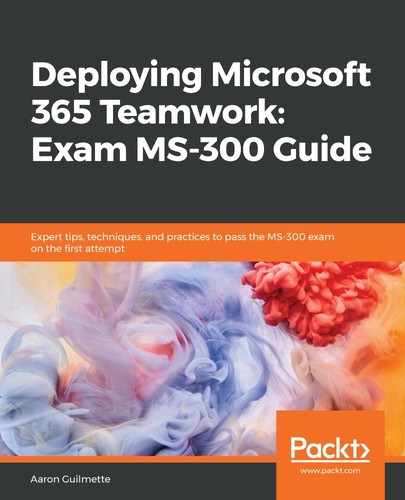If you have already created a taxonomy elsewhere or have a very lengthy term set to create, you can import it directly into the term store. The term set import file is a CSV that has a specific format.
The first line of the CSV import contains the following comma-separated data:
"Term Set Name","Term Set Description","LCID","Available for Tagging","Term Description","Level 1 Term","Level 2 Term","Level 3 Term","Level 4 Term","Level 5 Term","Level 6 Term","Level 7 Term"
The second line of the import file contains the actual name of the term set, a comma, a description of the term set, two more commas, either the words TRUE or FALSE to indicate whether the terms are available for tagging, and then eight more commas.
The third line of the import file is where the actual terms begin. The first two fields are blank, followed by the locale identifier (if this field is blank, then the locale of the term store is used by default), either the words TRUE or FALSE to indicate whether a term is available for use, the term description, and the last seven fields are used to show the hierarchy of the items.
Imagine this bulleted list represents the items in the term set:
- Locations (term set)
- United States (Level 1 term)
- New York (Level 2 term)
- New York City (Level 3 term)
- Albany (Level 3 term)
- Rochester (Level 3 term)
- Florida (Level 2 term)
- Jacksonville (Level 3 term)
- Tampa (Level 3 term)
- Orlando (Level 3 term)
- New York (Level 2 term)
- Europe (Level 1 term)
- France (Level 2 term)
- Nice (Level 3 term)
- Paris (Level 3 term)
- Germany (Level 2 term)
- Berlin (Level 3 term)
- Frankfurt (Level 3 term)
- France (Level 2 term)
- United States (Level 1 term)
The sample CSV import file might look like this:
"Term Set Name","Term Set Description","LCID","Available for Tagging","Term Description","Level 1 Term","Level 2 Term","Level 3 Term","Level 4 Term","Level 5 Term","Level 6 Term","Level 7 Term"
"Locations","Office Locations",,TRUE,,,,,,,,
,,1033,TRUE,,"United States","New York",,,,,
,,1033,TRUE,,"United States","New York","New York City",,,,
,,1033,TRUE,,"United States","New York","Albany",,,,
,,1033,TRUE,,"United States","New York","Rochester",,,,
,,1033,TRUE,,"United States","Florida",,,,,
,,1033,TRUE,,"United States","Florida","Jacksonville",,,,
,,1033,TRUE,,"United States","Florida","Tampa",,,,
,,1033,TRUE,,"United States","Florida","Orlando",,,,
,,1033,TRUE,,"Europe",,,,,,
,,1033,TRUE,,"Europe","France",,,,,
,,1033,TRUE,,"Europe","France","Nice",,,,
,,1033,TRUE,,"Europe","France","Paris",,,,
,,1033,TRUE,,"Europe","Germany",,,,,
,,1033,TRUE,,"Europe","Germany","Berlin",,,,
,,1033,TRUE,,"Europe","Germany","Frankfurt",,,,
To import the term set file, follow these steps.
- Open the Term Store management tool.
- Navigate to the group where you wish to import the term set file. If one does not exist, you can create a group using the steps in the previous section. Point to the group, click the down arrow that appears next to it and select Import Term Set.
- On the Term set import page, click Browse and navigate to the location of the saved import file. Click OK.
- Review the imported term set:

